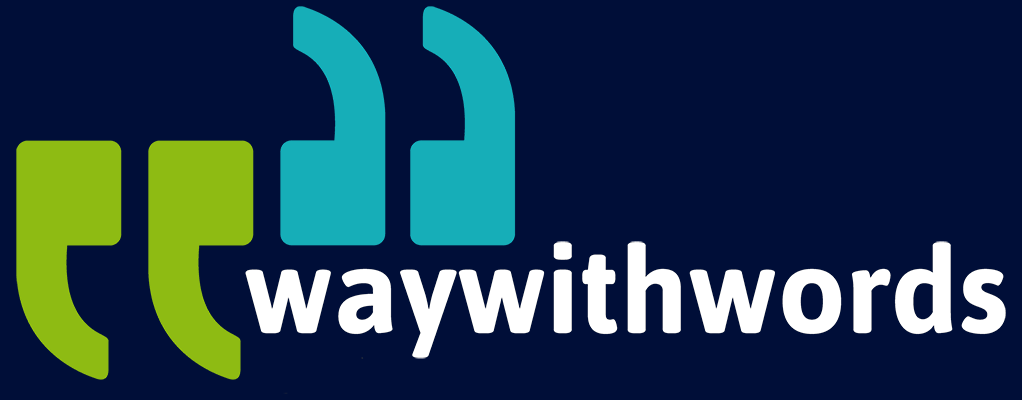What is Speaker Identification and How Does It Enhance Transcripts?
Enhancing Transcripts with Speaker Identification
When people think about transcription, they usually imagine a block of text representing spoken words. But without knowing who is speaking, especially in multi-speaker settings, transcripts can quickly become confusing and sometimes misleading. This is where speaker identification comes in and why it’s such an important part of creating transcripts that are not only readable but genuinely useful.
Speaker identification refers to the process of attributing dialogue in a transcript to the correct individual. It plays a crucial role in helping readers follow conversations, whether in a court hearing, corporate meeting, broadcast interview, or academic discussion. Without it, the entire flow of a conversation can be lost.
As transcription becomes increasingly common in diverse sectors—from legal law firms and financial services to education and entertainment—the demand for accurate speaker labelling continues to rise. Clients now want more than just the words. They want clarity, structure, and the full context, including who said what, how they said it, and in what tone or setting.
Three common questions we often hear about this topic are:
- Why does speaker identification matter in multi-speaker transcription?
- Is there a difference between automated and human speaker identification?
- Can speaker labels be customised based on industry needs?
This short guide will explore speaker identification in transcription and how it enhances transcript clarity, reliability, and overall usability. We’ll unpack its use in various professional settings and explain how it supports better communication, documentation, and decision-making.
Enhanced Transcripts with Speaker Identification
1. What Is Speaker Identification?
Speaker identification is the process of tagging or labelling who is speaking at any given time in a transcript. It enables readers to follow conversations by clearly attributing dialogue to the appropriate speaker. This is especially important in recordings with more than one voice, which is common in everything from panel discussions and roundtables to court cases and interviews.
There are two primary forms of speaker identification:
- Speaker diarisation – distinguishing between different speakers without necessarily knowing their identity.
- Speaker recognition – assigning a specific name or role to a voice, often based on prior knowledge or supporting information.
Both play vital roles, but which is used depends on the context and the available data. For example, in confidential or blind studies, diarisation might suffice. In legal or business environments, recognition and precise identification are usually required.
Accurate speaker identification is essential for a clean and comprehensible transcript. Without it, quotes may be misattributed, making interpretation difficult or even misleading. In some situations, it can even lead to legal or professional consequences.
Important points:
- Crucial for transcripts involving two or more speakers
- Avoids ambiguity and confusion in written dialogue
- Supports better analysis, legal compliance, and decision-making
- Essential for multi-voice documentation such as hearings, board meetings, and focus groups
2. Why Multi-Speaker Transcription Needs Speaker Labels
When two or more people speak in a recording, knowing who says what is not just helpful — it’s vital. Think of a business negotiation, a panel discussion, or a courtroom proceeding. In each case, different perspectives, responsibilities, and implications are tied to specific speakers. Getting the speaker wrong can alter the meaning of a statement significantly.
Speaker labels in multi-speaker transcription help:
- Track the flow of the conversation across topics
- Attribute comments and decisions accurately
- Ensure accountability by showing who said what and when
- Allow for better content analysis in research, media, or legal settings
Additionally, speaker labels help with indexing and searchability in large transcripts. For example, a stakeholder reviewing meeting notes can easily jump to all comments by the CFO or HR lead.
Without proper speaker identification, a transcript becomes just a jumble of words — not a reliable or usable record.
Important points:
- Enables clarity in overlapping or complex dialogue
- Supports detailed review and speaker-specific follow-ups
- Necessary for roles like moderator, interviewer, panellist, or witness
- Adds critical metadata for future audits or reviews
3. Improving Dialogue Clarity with Speaker Identification
Clarity is everything in a transcript. A document that faithfully captures spoken content but fails to distinguish speakers risks losing much of its usefulness. Imagine reading through pages of a high-stakes corporate meeting or investigative interview and not knowing who said what. The lack of speaker clarity can result in misinterpretation, misunderstandings, and missed opportunities.
With accurate speaker identification, the flow of conversation becomes easier to follow. It allows the reader to visualise the exchange and understand how discussions evolved. This is especially useful in transcripts that will later be analysed for tone, sentiment, or influence—such as in marketing focus groups or political interviews.
For instance, in qualitative research involving group discussions, it’s essential to differentiate between dominant and passive voices. Without speaker labels, trends like repetition, consensus, or dissent may go unnoticed. In journalistic settings, clear attribution ensures that quotes are used accurately and responsibly.
Even in customer service environments, understanding how agents and customers interact—who interrupts, who drives the dialogue, and when—is a major benefit. Speaker identification supports performance evaluation, script adherence checks, and insight generation from real conversations.
Important points:
- Brings structure and flow to transcripts involving multiple voices
- Enhances the readability of long or technical conversations
- Allows for more effective speaker-based analysis
- Improves traceability for decision-making or content audits

4. Legal Transcription and the Importance of Speaker Attribution
Legal transcription is one of the most demanding applications of speaker identification. Court hearings, depositions, and arbitration sessions involve numerous participants—judges, solicitors, expert witnesses, defendants—and the transcript must reflect this complexity accurately.
Misattributing a speaker in a legal transcript can have serious repercussions. Statements from witnesses must be accurately documented to be admissible. Judges’ rulings and lawyers’ objections must be clearly differentiated. If a statement is wrongly attributed, it could undermine the validity of the transcript and, in extreme cases, affect legal outcomes.
Legal professionals also rely on speaker identification to prepare for cases. A lawyer reviewing past hearings needs to see which comments came from opposing counsel, which were from their own client, and what the judge’s interjections were. In arbitration or disciplinary hearings, knowing who made key statements informs the entire review process.
This is why legal transcripts are often produced or checked by professional human transcribers trained in legal terminology and procedural nuance. While speech recognition tools are improving, the stakes in legal transcription typically require a human touch.
Important points:
- Protects the integrity of legal proceedings and documentation
- Prevents misattribution of statements that could influence verdicts
- Essential for accurate case review, appeal, or regulatory reporting
- Typically requires human transcription for quality assurance
5. Speaker Identification in Corporate and Business Settings
In business, conversations are rarely simple. Whether it’s a board meeting with multiple executives, a brainstorming session across departments, or a client pitch involving several team members, knowing exactly who said what helps drive accountability and action. Speaker identification in corporate transcription goes beyond formality — it supports productivity, transparency, and strategic follow-through.
For instance, in a project meeting where roles are clearly defined (e.g., Project Manager, CFO, Developer), accurate speaker labels make post-meeting reviews far more efficient. You can see what decisions were made, by whom, and identify any unresolved issues or action points without having to listen back to the full recording.
In environments where decisions must be recorded for compliance reasons, such as financial services or government departments, speaker attribution also plays a critical compliance role. Regulatory bodies may require clear logs of internal communications, particularly when financial advice, investment decisions or policy discussions are involved.
Corporate transcription that includes speaker identification often integrates custom tags, such as job titles or departments. This creates a layer of clarity that is especially useful in larger organisations or multinational operations.
Important points:
- Provides clarity for reviewing and following up on meeting decisions
- Enhances organisational memory and supports team collaboration
- Useful for compliance, documentation, and internal audits
- Can incorporate custom tags (e.g., job titles, teams)
6. Speaker Tags in Media, Podcasts, and Interviews
In the media world, speaker identification enhances storytelling. Podcasts, panel interviews, TV productions, and documentaries often feature multiple voices. If these voices aren’t clearly labelled in transcripts, much of the nuance and engagement of the original audio is lost.
For content editors, clear speaker tags simplify the task of identifying soundbites, attributing quotes, and crafting subtitles or captions. It enables teams to quickly locate impactful statements by specific individuals. For social media producers, it means being able to slice and repurpose content efficiently—knowing exactly which voice to feature.
Accessibility is another key concern. Audiences with hearing impairments rely on speaker-labelled captions or transcripts to follow discussions. For them, knowing who is speaking at any moment is not just useful — it’s essential. Speaker identification supports inclusivity by making complex dialogue more understandable.
In post-production, editors and producers often require transcripts to log footage. Without speaker IDs, that task becomes a slow and frustrating process. With them, editors can track narratives, identify emotion, and support editorial storytelling.
Important points:
- Supports clear, accurate content editing and production workflows
- Enables accessibility for diverse audiences
- Enhances the value of transcripts as editorial and promotional tools
- Allows accurate speaker-based segmentation for social media and marketing
7. Speaker Identification in Academic Research
In academic research, especially in the humanities and social sciences, speaker identification plays a foundational role. Researchers conducting qualitative studies—through interviews, focus groups, or observational recordings—rely on accurate transcripts to analyse behavioural patterns, individual perspectives, and group dynamics. Without speaker labels, much of the value of these transcripts is lost.
For example, a social researcher studying family dynamics may record a multi-person interview involving parents and children. The nuance in each participant’s voice and the relationships between them is essential to the study’s findings. Knowing exactly who is speaking enables the researcher to trace patterns, reactions, and contradictions that inform meaningful analysis.
Furthermore, in longitudinal studies where subjects are interviewed multiple times over a period, tracking speaker identity becomes even more critical. It ensures consistency, enables comparisons, and preserves the integrity of the research. Speaker identification also helps in managing consent protocols and anonymisation procedures, which are often mandatory in academic ethics.
In educational contexts, transcripts of seminars, thesis defences, and panel discussions benefit greatly from speaker labels. These can later be used for reference, publication, or training purposes. Many universities now mandate speaker identification in transcripts that are submitted with dissertations or funded research.
Important points:
- Supports data integrity and repeatability in research
- Enables thematic coding and comparative analysis across interviews
- Essential in oral histories, social science, and qualitative studies
- Facilitates ethical transparency and anonymisation protocols

8. Automated vs. Human Speaker Identification
As transcription tools grow more sophisticated, many providers now offer automated speaker identification features—also known as speaker diarisation. These systems use machine learning to distinguish between voices, attributing speech to different “Speaker 1”, “Speaker 2”, and so on. While useful, these systems are not without their limitations.
Automated speaker identification can struggle with overlapping dialogue, background noise, and speakers who have similar vocal tones or accents. It may also misidentify speakers in recordings with sudden changes in volume or pacing. This makes automation more appropriate for internal use cases, drafts, or instances where absolute accuracy isn’t critical.
Human speaker identification, on the other hand, remains the gold standard. A trained transcriber can often use contextual clues, prior knowledge, and even role-based expectations to correctly label speakers. In legal, academic, or regulated environments, human input is often mandatory or strongly preferred. Some hybrid models combine automated diarisation with human review to ensure accuracy while managing costs.
Ultimately, the choice between human and machine depends on your use case, budget, and the quality of your audio. Complex environments with high stakes usually benefit from the precision and insight only a human transcriber can offer.
Important points:
- Automated systems are fast but may lack precision in complex audio
- Human transcription offers superior accuracy and speaker recognition
- Hybrid models can balance efficiency with quality
- Consider the purpose and sensitivity of the transcript when choosing a method
9. Customising Speaker Labels by Industry
Speaker identification isn’t one-size-fits-all. Different industries have unique ways of referring to participants in their conversations. A legal proceeding might refer to “Judge”, “Prosecutor”, and “Witness”, while a tech product meeting might use names, job titles, or team identifiers like “Dev Lead” or “UX Designer.” The ability to customise speaker labels helps make transcripts more relevant and user-friendly.
Customisation enhances both the readability and functionality of a transcript. A healthcare research team may prefer pseudonyms or participant codes to protect patient confidentiality. A documentary filmmaker might choose to tag speakers by role (e.g., “Narrator”, “Historian”) to align with script annotations. For multilingual environments or international conferences, labels might include location or native language for additional clarity.
Many transcription providers support client-defined speaker tags, especially in human-led transcription services. Even automated platforms often allow for post-processing where users can assign labels retroactively. This flexibility ensures that the final transcript reflects the needs of the end user, making it more actionable and suitable for direct implementation in reports, publications, or systems.
Important points:
- Industry-specific tags enhance clarity and usability
- Customisation supports compliance and operational preferences
- Labels can reflect roles, departments, pseudonyms, or locations
- Adds professional polish to final documentation
10. Challenges in Speaker Identification
Despite its benefits, speaker identification is not always straightforward. It comes with a set of challenges that vary depending on the recording environment, quality, number of speakers, and context.
One major challenge is poor audio quality. Background noise, echo, low volume, and recording from mobile devices can make it difficult for both humans and machines to distinguish speakers accurately. Another common issue is overlapping dialogue, which can confuse even the most advanced AI systems and requires careful interpretation by human transcribers.
In multi-speaker situations—such as roundtables or focus groups—similar voice tones or accents can lead to confusion. Lack of contextual information, such as visual cues or prior identification, can also hinder accuracy. For automated systems, even something as simple as a change in microphone distance can result in mislabelled sections.
Preparation and quality control are key to overcoming these challenges. Choosing high-quality equipment, briefing speakers beforehand, and opting for human-reviewed transcripts in critical cases can significantly improve speaker identification.
Important points:
- Poor audio quality and noise affect speaker recognition
- Overlapping speech can cause misidentification
- Similar voice tones are challenging for machines and sometimes humans
- Preparation and review processes can mitigate many issues
5 Useful Tips When Thinking About Speaker Identification
- Prioritise audio clarity – Use good recording equipment and minimise background noise. Clean input makes identification far easier.
- Introduce speakers at the start – Having speakers say their name and role early on helps with both human and automated processing.
- Use custom tags – Consider naming conventions that reflect your organisation, project, or study to make transcripts more actionable.
- Review and edit automated results – If using automation, always perform a review or request human oversight for critical recordings.
- Think ahead – Decide in advance how speaker labels will be used in reports, legal filings, or media. Planning helps avoid rework.
Speaker Identification as a Transcription Essential
Speaker identification is not just a technical feature — it’s a transcription essential. It transforms a transcript from a flat record of words into a dynamic, usable resource that retains the nuance and intent of spoken interactions. When we understand who said what, the document becomes a true reflection of the conversation and carries the clarity needed to take action.
Throughout this short guide, we’ve explored how speaker identification plays a critical role across sectors. Whether it’s for legal review, academic research, corporate meetings, or podcast production, identifying the speaker adds essential context that elevates the transcript from a tool to a trusted source.
We’ve also looked at the pros and cons of automation versus human transcription, the need for industry-specific labels, and the importance of preparation in overcoming challenges. Across all these examples, the recurring theme is clear: accuracy matters. And speaker attribution is at the heart of it.
If there’s one key takeaway, it’s this — whether you’re working with a machine-generated transcript or a human-led service, always ensure speaker identification is part of your transcription specification. It’s the difference between capturing sound and capturing meaning.
Further Resources
Wikipedia – Speech Recognition – Explains how speech recognition technology processes multiple speakers and how it contributes to transcription accuracy.
Transcription Services Resource: Way With Words – Way With Words employs advanced technology and highly skilled transcribers to overcome common challenges in transcription, ensuring that clients receive accurate and reliable transcripts regardless of the complexity of their audio files.
